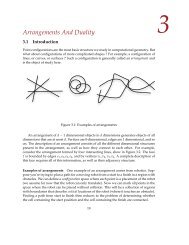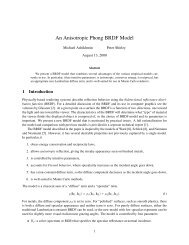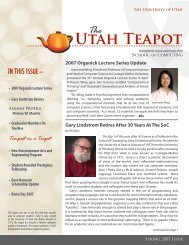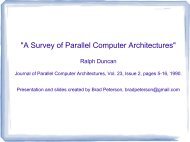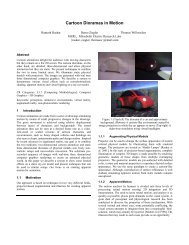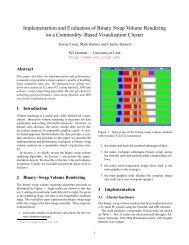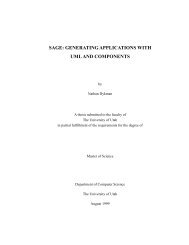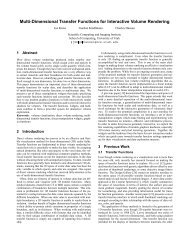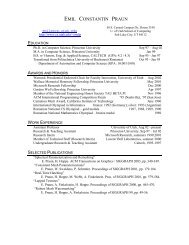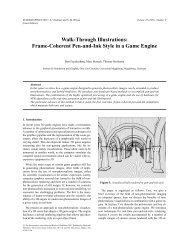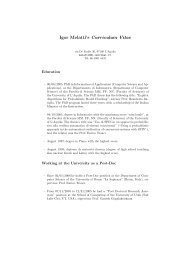CAGD II – COURSE PROJECT
CAGD II – COURSE PROJECT
CAGD II – COURSE PROJECT
You also want an ePaper? Increase the reach of your titles
YUMPU automatically turns print PDFs into web optimized ePapers that Google loves.
Now the new base mesh B’ is copied into Sb and S is obtained by refining Sb by the<br />
adequate levels. Now the control points of S are modified according to the matrix D. In<br />
other words, each control point of S is displaced along its u, v, and n directions<br />
according to the values stored in D. We thus get our new refined surface S.<br />
When Refined Surface is Updated S -> S’<br />
The control points of the surface S are just set to the new values corresponding to S’ as<br />
specified interactively by the user.<br />
There is a checkbox to specify the option of attempting to update the base mesh<br />
adequately. If this box is checked, the base mesh is changed so that it is as close to the<br />
refined mesh as possible. Now B and Sb are updated to this new base mesh.<br />
5 SOLVING AN OVER DETERMINED SET OF EQUATIONS<br />
Suppose we have a set of equations AX=B .<br />
The number of unknowns (dimension of X) is n and the number of equations is m. In our<br />
case, m>n.<br />
|AX-B| is called the residue .<br />
Since the system is over determined, the matrix A is singular and is not invertible. Under<br />
these circumstances, commonly, we try to find a solution that minimizes the least square<br />
norm |Ax-B| 2 . When we put the partial derivative of this expression with respect to x to<br />
0, we end up with the expression<br />
A t A x-A t B=0<br />
Or A t A x=A t B<br />
These are called the normal equations.<br />
And x= (A t A) -1 A t B<br />
The Expression A + = [(A t A) -1 A t ] is called the pseudo inverse of the Matrix A.<br />
A + is also called the Morse Penrose inverse <strong>–</strong> since A + satisfies A A + A = A




